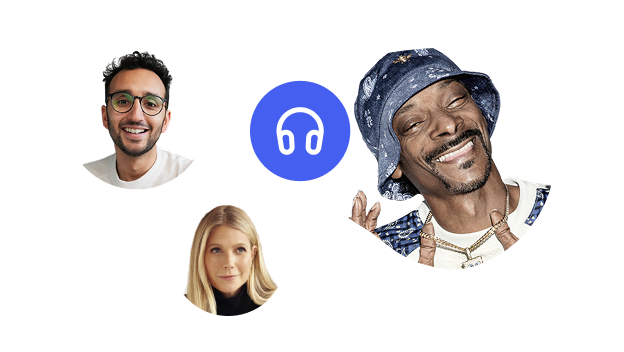Neurodivergent
Recognition of different modes of thinking is on the rise thanks to social media platforms and inclusivity movements. Understanding that the human brain operates differently from person to person is a relatively new concept and is changing the way we educate, work, and communicate. This understanding has given rise to the neurodiversity movement. Many forms of neurodivergence have been labeled as learning disabilities in years past, but it is becoming more evident that some of these conditions aren’t so much a disability as they are a different way of thinking.
In the past, those who have been diagnosed with a condition such as an autism spectrum disorder (ASD), attention deficit hyperactivity disorder (ADHD), or dyslexia, have struggled to thrive in a traditional work or education environment. With the recognition of different brain functions encompassed by neurodivergent people, individuals with these types of conditions are becoming more seen, understood, and accommodated in their day-to-day lives.
What is Neurodiversity?
Neurodiversity means an individual whose neurological function or mode of thinking differs from what would be considered normal, or neurotypical. It was coined by sociologist Judy Singer in 1998. Neurodivergence is commonly used to describe those with autistic spectrum disorders.
Common conditions that fall under the term neurodiversity are ADHD, autism, asperger’s syndrome, dyslexia, dyspraxia, epilepsy, obsessive-compulsive disorder (OCD), and Tourette syndrome (TS).
What is a Neurotypical?
A neurotypical person is someone whose neurological function and cognitive development is considered to be normal variations. This term is commonly used by autistic people and communities to describe someone whose cognitive function is what is perceived to be normal or non-autistic.
Helpful Tools for Neurodivergent Thinkers
Because of the different ways in which their brains operate, those with neurological differences may require certain accommodations when it comes to reading. There are many tools available to assist with these unique cognitive functions. One of the more preferred tools to assist with processing information is a text-to-speech reader.
TTS reader
Text-to-Speech readers enable people with disabilities to hear the text and follow along as it is read out loud. This is very helpful for neurodivergent individuals as it helps them process the information in both auditory and visual capacities.
Listening to text while it is read assists with increasing focus and building a stronger understanding than just reading alone can provide. It also improves the retention of information consumed because of the multiple modes in which is consumed.
Speechify
Speechify is a text-to-speech reader that reads aloud any materials that would normally be read. For those who are neurodivergent and struggle to find the focus to read in a classic setting or who struggle with letters on the page, Speechify is a fantastic option to assist them.
With reading being such an integral part of work and school, those who struggle with reading often find themselves falling behind and can suffer lower self-esteem and confidence as a result. Speechify can help reading tasks become more manageable by offering the option of listening in place of reading or listening as opposed to reading.
Speechify allows its subscribers to take photos of pages that they need to read, helping the neurodivergent with homework, training materials, mail, bills and so much more. As the app reads it also highlights the words as it goes, giving a visual appeal to reading along while listening. Speechify is compatible with Chrome, iOS, and Android allowing for listening on desktop from the comfort of home or mobile for on the go.
Information retention is increased with the use of text-to-speech software like Speechify because it allows reading materials to be consumed by both the auditory and visual modes of learning. Speechify also allows its users to adjust the speed at which the material is read to them, allowing them to consume a larger amount of material than they would normally be able to by reading alone.
Audible Learning
Audible learning is very effective for the neurodivergent community as it has been shown to help the material to be more comprehensible. For those who struggle with reading comprehension, understanding tone and voice inflection in text can be very difficult. However, when the material is read out loud, the listener can pick up on these cues because they can hear the difference in the words.
The ability to remove the stress of reading from someone who is struggling with comprehension of what they read makes all the difference in that person’s ability to retain the information that was read. Having materials read aloud allows those who struggle with reading to break down barriers surrounding comprehension and make connections with information that they already know.
Speechify is an effective tool in helping neurodiverse people who struggle with reading comprehension. With Speechify, reading becomes less of a struggle and more enjoyable.
Realistic Voices
To assist with the flow and retention of the material that the application reads, the artificial intelligence voices used by Speechify are considered more fluid and human-like than the typical AI voices that have been experienced in applications past.
By listening to an artificial voice that sounds inherently human, the reading experience becomes more natural. This is a large benefit to those who struggle with autism and removes some of the barriers to retention and understanding of the materials.
FAQs
What is considered neurodivergent?
The term neurodivergence is used to describe an individual whose neurological function or mode of thinking differs from what would be considered normal, or neurotypical. Neurodivergence is commonly used to describe those with autistic spectrum disorders (ASD).
What are the signs of neurodiversity?
Neurodivergent people have been diagnosed by a healthcare provider with a cognitive, learning, or developmental disorder such as ADHD, autism, or dyslexia. Some people consider themselves neurodivergent without an official diagnosis if they feel that their brains operate in a way that is atypical of what is perceived as normal.
What are the most common forms of neurodiversity?
The most common types of neurodivergence include but are not limited to neurological conditions or health conditions such as ADHD, autism, dyslexia, dyspraxia, dyscalculia, dysgraphia, bipolar disorder, schizophrenia, and epilepsy. Many forms of neurodiversity can be managed with medication prescribed by a mental health provider.
What are the benefits of being neurodivergent?
While being neurodivergent presents many challenges, it does come with its fair share of benefits as well. The brain differences that neurodivergent people bring to the table make them more apt to think outside of the box and bring fresh perspectives that may have not been considered in the past.
{"@context":"https://schema.org","@type":"FAQPage","mainEntity":[{"@type":"Question","name":"What is the most realistic text-to-speech tool?","acceptedAnswer":{"@type":"Answer","text":"Both Amazon Polly and Speechify offer extremely accurate, lifelike, and human sounding voices. However, Amazon's complicated pricing model makes Speechify a better choice for affordable and realistic text-to-speech. "}},{"@type":"Question","name":"Which is the best text-to-speech app?","acceptedAnswer":{"@type":"Answer","text":"The best text-to-speech app is the one that works for your unique needs. There are many options available on the market, each with different pros and cons. The best way to find the right app for you is to try them out and see which one fits. "}},{"@type":"Question","name":"Is there a website that reads text to you?","acceptedAnswer":{"@type":"Answer","text":"Any text-to-speech app or browser extension can read basic text to you in the form of .WAV files, MP3 files, and other types of audio files. "}},{"@type":"Question","name":"What is the best free text-to-speech online tool?","acceptedAnswer":{"@type":"Answer","text":"The best text-to-speech online app for free is Speechify's trial version. Even though Balabolka is completely free, the program lacks several important features that Speechify offers at no cost."}},{"@type":"Question","name":"Which speech apps have the best human voices?","acceptedAnswer":{"@type":"Answer","text":"NaturalReader, Speechify, and Amazon Polly have the most lifelike human-sounding voices of all text-to-speech applications. Polly's Neural Text-to-Speech (NTTS) makes it a leading choice, with Speechify coming in close behind. "}},{"@type":"Question","name":"What is the best text-to-speech software for recording podcast audio files?","acceptedAnswer":{"@type":"Answer","text":"Most popular text to speech programs can record podcast audio files that can be edited and uploaded to podcast listening platforms like iTunes and Spotify. Text-to-speech tools are a great way to get started with podcast recording if you are uncomfortable speaking aloud or if you do not have high-quality podcast recording equipment available to you."}},{"@type":"Question","name":"What is the best text-to-speech reader for Android and iOS?","acceptedAnswer":{"@type":"Answer","text":"There are multiple options for text to speech readers on iOS and Android. Which you choose depends largely on what features you need and whether you want to use the application in a browser or an app. Try on several for size and keep the one you like best."}},{"@type":"Question","name":"Which natural-sounding speech synthesis tools use deep learning or e-learning for custom voice generation?","acceptedAnswer":{"@type":"Answer","text":"The most technologically advanced text-to-speech applications are arguably Amazon Polly and Speechify. Both use state-of-the-art deep learning and artificial intelligence to generate natural-sounding, human-like voices that can read aloud any document."}},{"@type":"Question","name":"Which is the most lifelike speech tool for personal use?","acceptedAnswer":{"@type":"Answer","text":"If you need a text-to-speech application for personal use with lifelike speech, NaturalReader and Speechify are both excellent options."}},{"@type":"Question","name":"Which text-to-speech apps have the best celebrity speech voices?","acceptedAnswer":{"@type":"Answer","text":"Speechify has the most comprehensive list of popular celebrity voices available on any text-to-speech application. Popular celebrity voices users can choose from include A-list celebrities like Arnold Schwarzenegger, Gwyneth Paltrow, and more."}},{"@type":"Question","name":"Where can I find the best text-to-speech online tutorials?","acceptedAnswer":{"@type":"Answer","text":"There are many Internet tutorials available for the wide variety of text-to-speech tools available on the market. Some of the best text-to-speech online tutorials can be found on YouTube and other similar video platforms. "}}]}




